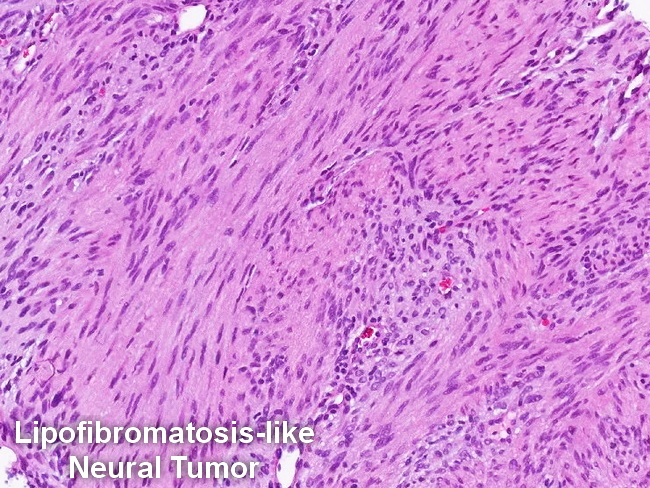Lipofibromatosis : Differential Diagnosis


Comments:
Differential Diagnosis of Lipofibromatosis (LF): The early lesions of LF with mesenchymal or diffuse pattern may resemble a variety of myxoid and lipomatous lesions such as myxoid liposarcoma (almost never occurs in children below 5 years, plexiform capillary network, typical lipoblasts), lipoblastomatosis (uniform adipocytes in a lobular pattern), botryoid rhabdomyosarcoma (rare in extremities; usually seen in mucosa-lined organs like urinary bladder and vagina), and calcifying aponeurotic fibroma (location in hands and feed; foci of calcification and cartilage). Lipofibromatosis vs Lipofibromatosis-like Neural Tumor (LLNT): LLNT is a related tumor that resembles lipofibromatosis but occurs in slightly older patients (median age 13.5 yrs; range 4 to 38 years). Other features favoring LLNT include: cytologic atypia, pleomorphic cells, strong staining for S100 protein and CD34+, and NTRK1 gene rearrangements. LLNT is a benign tumor with a recurrence rate of 40-50%. Case History: This core needle biopsy image of LLNT is from an 11 y/o female with a soft tissue mass in her right hand. The tumor showed patchy positivity for S100 (next image) and CD34, where as SMA, desmin, EMA, and pankeratins were negative. Image courtesy of: Scott Kilpatrick, MD; used with permission.



